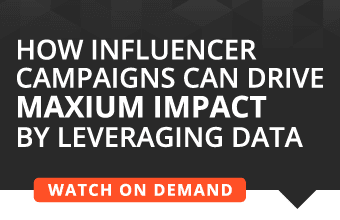In 2009 I was planning a tourism trip for a client. We wanted to identify a group of travel bloggers who were interested in learning more about Rwanda and turned to Twitter to find them. I distinctly remember receiving a message from one blogger who touted her one million Twitter followers as the reason why she should be invited to attend this trip, which included trekking through the mountains to meet Rwanda’s famous mountain gorillas face-to-face. Her pitch worked.
Fast forward to today, the influencer landscape is quite different. One million followers on Twitter (or X) wouldn’t land the same punch as it did back then. New and different channels, like Instagram, YouTube, and TikTok pack more punch and influence for brands trying to reach certain audiences. And follower counts have been displaced by engagement as the measure of influence.
Several other factors have made a significant impact on the way brands approach working with influencers. Key among them is the sponsorship budget that brands are allocating, and influencers are asking for, as well as the sheer number of influencers that have amassed significant followings, either through hard work or financial acquisition. Consider this: today 5.27 percent of Instagram accounts have more than 100,000 followers and .76 percent have more than 1M followers. With 2.35 billion active users, that means there are nearly 18 million Instagram accounts with at least 1M followers.
As brands navigate this ever-changing influencer landscape, here are five things they should consider when developing their influencer strategy:
1. Find influencers that are passionate about what your brand does
It doesn’t take much work to figure out if an influencer is creating content because they’re interested in the topic, or if they’re being paid to care. Both can be true, but sponsorship without passion will fall flat. Brands must identify and build relationships with influencers who actually care about a product or topic. Only then will a sponsorship or collaboration reach its full potential.
2. Find influencers that connect to your brand and purpose
Similar to having passion for what your brand does, the influencer should also have a connection to the brand itself. It will make the content richer, more meaningful, and have a greater impact. For example, an influencer who lives, sleeps and breathes Apple products isn’t an ideal collaborator for an Android smartphone brand.
3. Create inspiring experiences rather than focusing on selling a product
The best influencer content doesn’t focus on a product, it focuses on the experience that product creates. It doesn’t matter if you’re selling TVs, a smart oven or even a raincoat. Showcasing a product will resonate with people looking for that product. Creating an experience that influencers can bring to life on their channels results in desire, and that’s what builds brands and motivates buyers.
4. The most followed influencer isn’t necessarily the best one for you
According to eMarketer, in 2022, brands spent more than $4.51B on influencers. And 37.5 percent of those brands used influencers who had more than 100,000 followers. And as we established above, there are literally tens of millions of influencers with significant audiences that brands to choose from. The emerging influencers—eMarketer calls them nano-influencers and micro-influencers, folks who are building and curating their audiences—are eager to work with brands. That’s why it’s important to look beyond that follower number and identify which influencers check off boxes #1 and #2 above. Figure out who is easy to work with, who will go above and beyond, and who has the most engaged and interested audience. Remember, it’s not always the mega-influencers or even the mid-tier influencers.
5. Listen to the influencers and ask them questions
So many brands try to dictate the terms of sponsorship engagements—from the content itself to the channel it’s published on. It’s great to have a clear strategy for reaching your audience, but influencers know their own audiences better than anyone. They know what content will have the best engagement and on which channels each type of content performs best. During collaborations, brands should clearly articulate their goals and messages, and then trust influencers to tell the brand what it will take to create a successful campaign.
I have seen first-hand how implementing these five strategies can have a long-term measurable impact on brands and products. But brands also need to embrace change. Influencer content, reach, and engagement is constantly changing as platforms come and go—and change their algorithms and features. Embracing these changes and staying true to the strategies above will lead to the impact brands are looking for.








